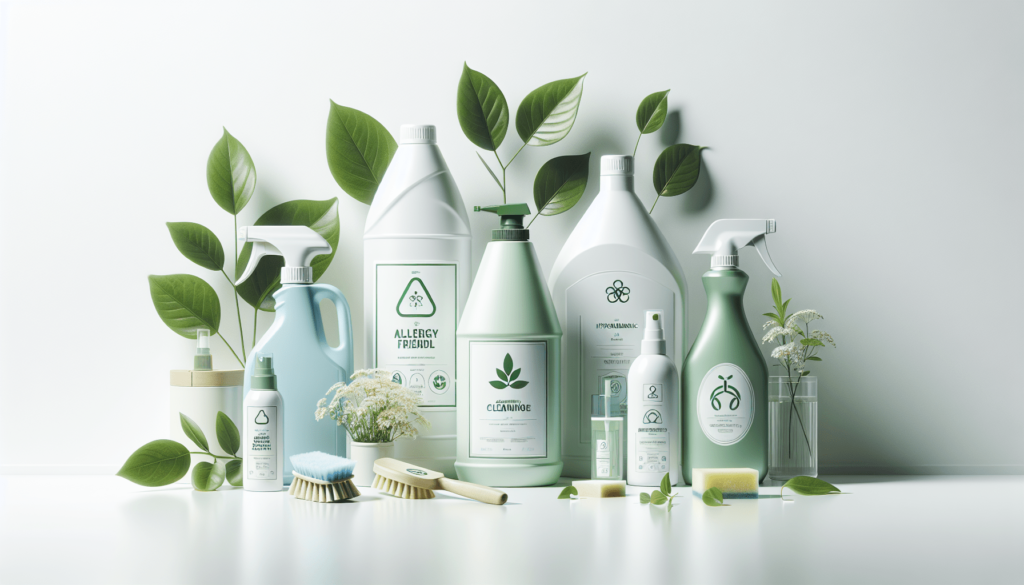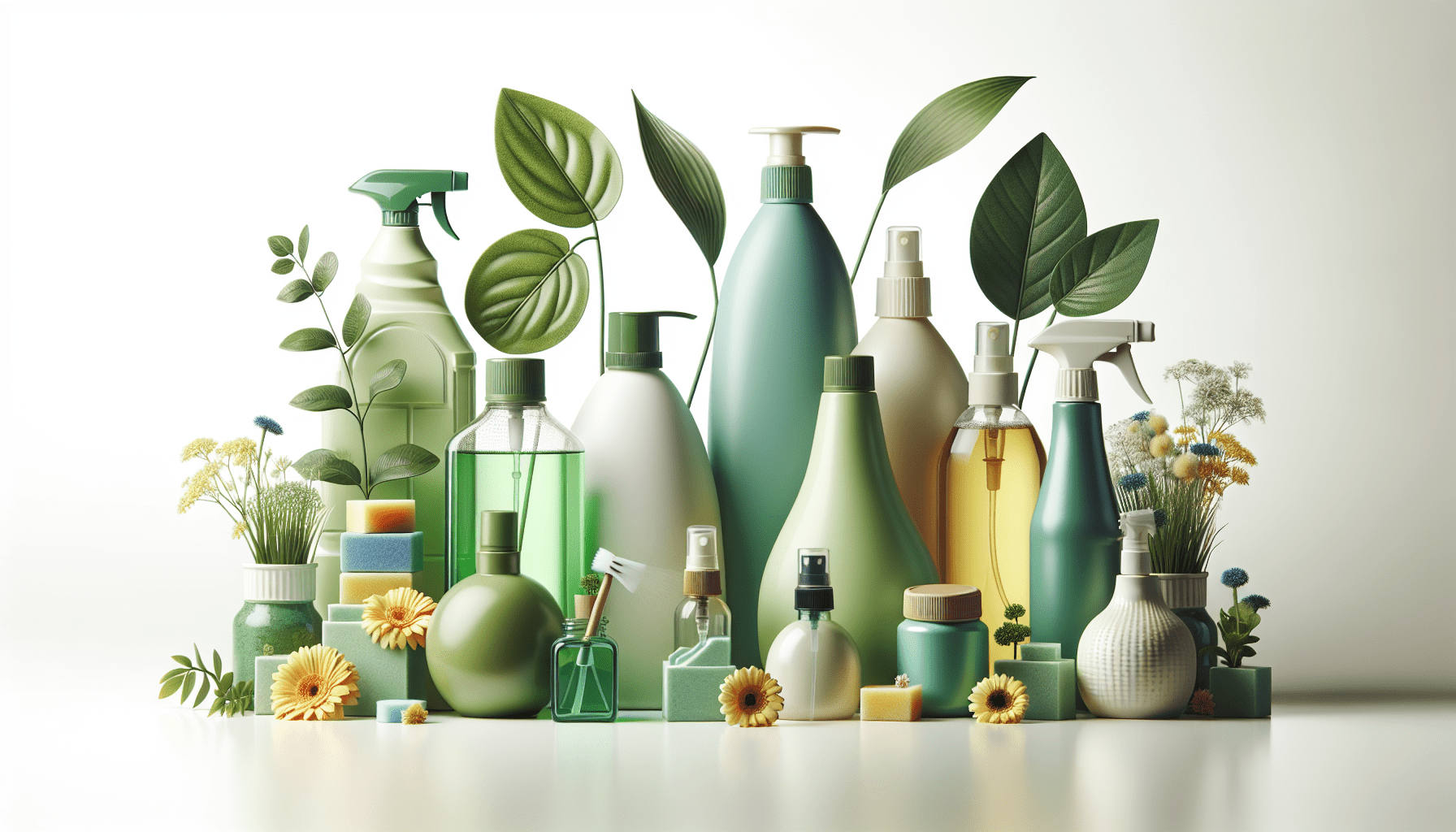You deserve a clean home that doesn’t trigger your allergies, and finding the right cleaning products can make all the difference. “Top Ways to Shop for Allergy-Friendly Cleaning Products” is your essential guide to discovering the best ways to keep your living space spotless without worrying about sneezing fits and itchy eyes. From understanding labels to exploring hypoallergenic alternatives, this article provides you with practical tips and tricks to make your shopping experience seamless and efficient—leaving you with a healthier, happier home.
Top Ways To Shop For Allergy-Friendly Cleaning Products
Have you ever felt overwhelmed while standing in the cleaning products aisle, wondering which items are truly safe for your allergies? If the answer is yes, then you’re not alone. Many of us grapple with this challenge, striving to create a clean home without triggering our or our loved ones’ allergies. Let’s dive into the best ways to shop for allergy-friendly cleaning products to make your life easier and your home healthier.
Understanding Allergies and Cleaning Products
First things first, let’s talk about what makes a cleaning product allergy-friendly. Traditional cleaning products often contain harsh chemicals that can trigger allergic reactions or even worsen existing allergies. These reactions can include sneezing, itchy eyes, skin irritation, or respiratory problems. Knowing what to look for, and what to avoid, sets the stage for a more allergy-friendly home.
Common Allergens in Cleaning Products
Here’s a quick rundown of ingredients to watch out for:
| Allergen | Found In |
|---|---|
| Fragrances | Air fresheners, scented cleaners, laundry detergents |
| Formaldehyde | Disinfectants, air fresheners |
| Ammonia | Glass cleaners |
| Chlorine | Mold removers, toilet bowl cleaners |
| Parabens | Surface cleaners, dish soaps |
These ingredients can cause or exacerbate allergic reactions. Being able to identify these common culprits can help you avoid them when shopping.
Label Literacy: Decoding Product Labels
Navigating labels is a skill that will serve you well. Here’s how to become an expert in reading them.
Look for Certifications
Certified products often undergo rigorous testing to ensure they meet certain safety standards. Look out for:
- EPA’s Safer Choice: Indicates products that are both effective and safer for health and the environment.
- Green Seal: Products with reduced environmental impact.
- Allergy UK Seal of Approval: Products that have been tested to be allergen-free or reduce allergens effectively.
Ingredient Transparency
Some products list their ingredients in clear, easy-to-understand terms. Others might use scientific jargon or proprietary terms. Here’s a tip: If you can’t pronounce it, you probably don’t want it in your home.

The Case for Homemade Cleaning Solutions
Sometimes, the best way to ensure you’re using allergy-friendly products is to make them yourself. This way, you know exactly what’s in the bottle.
Simple Recipes Using Common Ingredients
- All-Purpose Cleaner: Combine 2 cups of water with 1/2 cup of white vinegar. Add a few drops of essential oil for a pleasant scent.
- Glass Cleaner: Mix equal parts water and white vinegar.
- Fabric Softener: Add 1/4 cup of baking soda to your laundry load.
These easy recipes use basic ingredients that are less likely to trigger allergies.
Shopping Hacks for the Allergy-Conscious Consumer
Start with a Plan
Know what you need before you hit the stores. Make a list of the products you’re looking to replace with allergy-friendly alternatives.
Keep it Local
Farmers markets and local natural stores often have a great selection of natural cleaning products, and the staff is usually more knowledgeable about what’s in the products they sell.
Read Reviews
Online reviews can be very helpful, especially those from people with similar allergies. They often provide insights that the product description doesn’t.
Sample First
Whenever possible, test smaller-sized products before committing to a large purchase. This way, if the product doesn’t work for you, you’re not stuck with a lot of it.

Brands That Get It Right
Not all brands are created equal, and some have made it their mission to create allergy-friendly products.
Noteworthy Brands
| Brand Name | Product Range | Certifications |
|---|---|---|
| Seventh Generation | Cleaners, Laundry, Dishwashing | EPA Safer Choice, Leaping Bunny |
| Method | Surface Cleaners, Hand Wash, Laundry | Cradle to Cradle, B Corporation |
| Ecos | Laundry, Dishwashing, Household Cleaners | EPA Safer Choice, U.S. EPA Award |
| Ecover | Laundry, Dish, Household Cleaning Products | Leaping Bunny, EPA Safer Choice |
| Attitude | Household Cleaning Products, Baby Care | EcoLogo |
These brands have a strong reputation for being considerate of allergies and environmental impact.
Eco-friendly Doesn’t Always Mean Allergy-Friendly
While it’s tempting to assume that eco-friendly products are safer for allergies, this is not always the case. Some natural ingredients, like essential oils or certain botanicals, can still trigger allergic reactions.
Spotting the Difference
- Eco-friendly products aim to reduce environmental impact.
- Allergy-friendly products focus on reducing allergic reactions.
Look for specific allergy-friendly claims on the label, even if the product is already eco-friendly.
The Role of Air Purifiers and Vacuums
Cleaning products are only one part of the equation; the tools you use also play a critical role in maintaining an allergy-friendly home.
Choosing the Right Vacuum
Here are some features to look for:
- HEPA Filter: Captures 99.97% of particles, great for allergens.
- Bagged over Bagless: Bagged vacuums often release fewer allergens.
- Sealed System: Ensures no particles leak back into the air.
Air Purifiers
Air purifiers can be a great addition, especially ones equipped with HEPA filters. They can eliminate allergens like pollen, dust mites, and pet dander from your home’s atmosphere.
Making the Switch: Transitioning to Allergy-Friendly Products
Switching to allergy-friendly products is a journey, not a sprint.
Gradual Transition
You don’t need to swap everything overnight. Start with the products that cause you the most irritation and replace them with better options as they run out.
Monitor and Adjust
Keep track of any changes in your allergy symptoms as you introduce new products. This will help you identify which ones work best for you.
The DIY Route: Pros and Cons
While making your own cleaning products can be a great way to ensure they’re allergy-friendly, it comes with its own set of pros and cons.
Pros
- Control: You control the ingredients, ensuring there are no hidden allergens.
- Cost: Often cheaper than buying specialty products.
- Customization: Tailor each recipe to your specific needs and preferences.
Cons
- Time: Making your own products can be time-consuming.
- Effectiveness: Homemade solutions might not be as strong as commercial ones.
- Storage: Some DIY products don’t have the same shelf life as their store-bought counterparts.
Checking Household Essentials
Don’t overlook other household essentials that could be causing allergy issues.
Laundry Detergents
Opt for hypoallergenic and fragrance-free detergents. These are less likely to leave residues that could irritate your skin or trigger respiratory issues.
Dish Soaps
Choose dish soaps that are free of dyes, synthetic fragrances, and other harsh chemicals. Look for terms like “clear,” “free,” and “transparent” on the label.
Hand Soaps
One of the most frequently used household items, hand soaps can be a major allergen trap. Go for unscented and dye-free options.
Final Tips for an Allergy-Friendly Home
Here are a few last tips to ensure your home stays clear of allergens:
Regular Cleaning
- Dust and Vacuum Regularly: Keeping dust at bay is crucial. Use a vacuum with a HEPA filter.
- Wash Bedding Weekly: Use hot water to kill dust mites and remove allergens.
- Air Out Rooms: Ventilate rooms to help eliminate airborne allergens.
Pet Care
If you have pets, make sure to groom them regularly and clean their bedding. Wash your hands after handling pets.
Moisture Control
Keep an eye on humidity levels in your home. Too much moisture can lead to mold growth, which is a common allergen.
Wrap-Up: A Cleaner, Healthier Home
Creating an allergy-friendly home doesn’t have to be overwhelming. With the right knowledge, tools, and products, you can maintain a safe and healthy environment for yourself and your loved ones. Remember, it’s all about being informed and making small, manageable changes over time. Happy cleaning!
